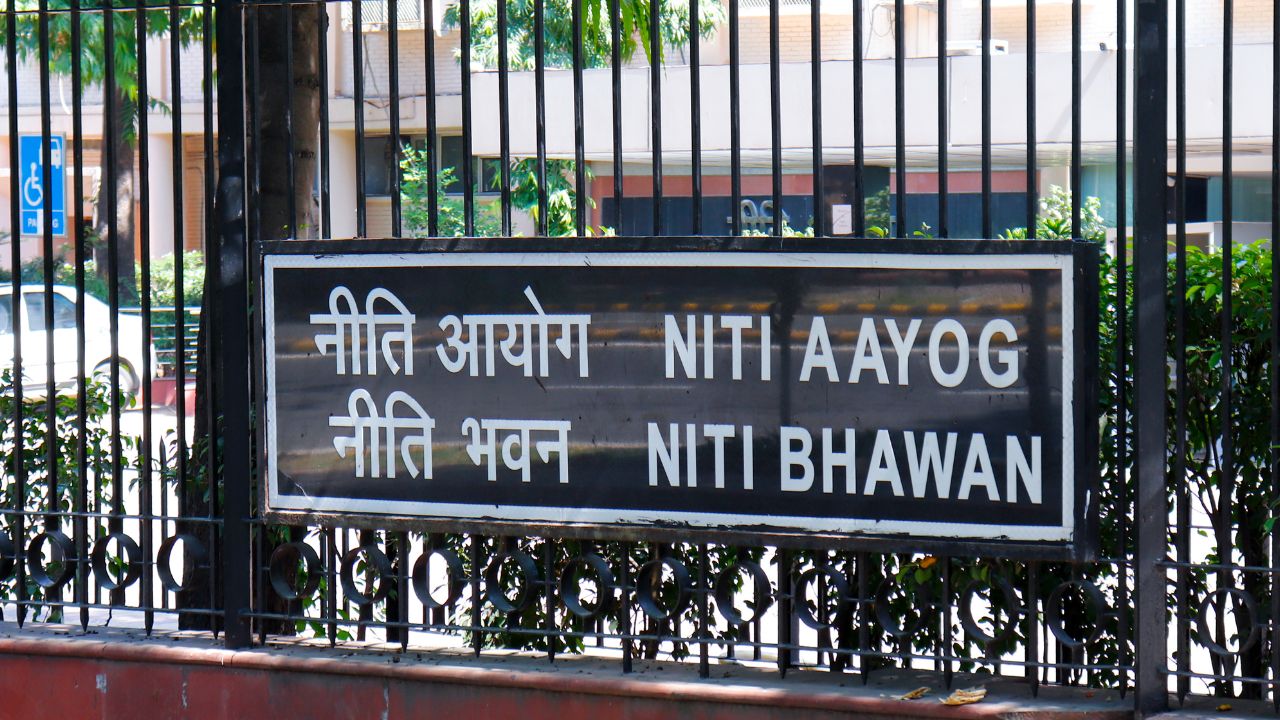Business
NITI Aayog Chief Signals Reforms Ahead of Diwali to Boost Trade

India is poised for a potential wave of significant reform announcements by Diwali, aimed at bolstering the economy and enhancing manufacturing competitiveness. This assertion was made by BVR Subrahmanyam, the CEO of NITI Aayog, during the launch of the think tank’s Trade Watch Quarterly Report for the fourth quarter of the fiscal year 2025 in New Delhi. Subrahmanyam highlighted that high-level committees, under the leadership of Cabinet Secretary Rajiv Gauba, have already submitted initial reports detailing proposed reform measures. Discussions on these reforms are advancing into their next phase.
The government is also nearing the launch of the National Manufacturing Mission, which seeks to improve India’s industrial competitiveness and diversify its manufacturing base. Subrahmanyam emphasized the necessity of strengthening and diversifying the manufacturing sector, warning that protectionist measures in certain areas could impede overall competitiveness.
Manufacturing Activity Shows Mixed Signals
These comments come as India’s manufacturing activity displayed signs of moderation in September. The HSBC India Manufacturing Purchasing Managers’ Index (PMI) dropped to 57.7, down from 59.3 in August, marking the slowest improvement in four months, though it still indicates expansion. Pranjul Bhandari, Chief India Economist at HSBC, noted that while the index softened, it remains above the long-term average, reflecting persistent optimism bolstered by recent tax relief measures.
In August, the Index of Industrial Production (IIP) rose by 4% month-on-month, driven by rebounds in mining and electricity sectors. However, manufacturing growth slowed to 3.8%, down from 6% in July, indicating a mixed industrial momentum.
Addressing Trade Imbalance
Subrahmanyam also addressed the issue of India’s trade imbalance, describing the country’s trade composition as highly skewed and concentrated in a limited range of products that do not align with global trade dynamics. He characterized this imbalance as a structural problem that requires correction through enhanced diversification and productivity-driven growth.
“Our trade is very, very unbalanced. It is concentrated in a few products—and in the wrong products. We trade items that the rest of the world does not trade in large quantities,” Subrahmanyam remarked, as quoted by Business Today. He suggested that India could expand its trade deficit if necessary to foster industrial growth, but stressed the importance of improving competitiveness rather than relying on tariffs to shield certain sectors.
According to provisional data from the Commerce Ministry, India’s merchandise exports increased by 6.7% year-on-year in August 2025, reaching $35.1 billion, up from $32.89 billion a year earlier. Sequentially, however, exports fell from $37.24 billion in July, while imports decreased from $64.59 billion to $61.59 billion during the same period.
Renewed global trade tensions add complexity to these discussions. Recently, US President Donald Trump acknowledged that a 50% tariff imposed on India due to ongoing oil imports from Russia has strained bilateral relations. External Affairs Minister S. Jaishankar stated on October 5, 2025, that any future trade agreements must respect India’s “red lines,” indicating ongoing negotiations to find a suitable compromise.
In light of these challenges, India is intensifying its regional trade efforts. Prime Minister Narendra Modi is expected to attend the 47th ASEAN Summit in Kuala Lumpur on October 26-27, following the 11th Joint Committee Meeting in Jakarta to review the ASEAN-India Trade in Goods Agreement (AITIGA). Government sources indicate that while progress has been made, India is advocating for a country-specific review of the AITIGA to address its expanding trade deficit with ASEAN nations, where imports surged by 186% from fiscal year 2011 to fiscal year 2023, significantly outpacing export growth of 65% in the same period.
The path ahead for India’s trade and manufacturing sectors involves navigating these complexities while aiming to enhance competitiveness and sustainability in a rapidly evolving global market.
-

 World5 months ago
World5 months agoSBI Announces QIP Floor Price at ₹811.05 Per Share
-

 Lifestyle5 months ago
Lifestyle5 months agoCept Unveils ₹3.1 Crore Urban Mobility Plan for Sustainable Growth
-

 Science4 months ago
Science4 months agoNew Blood Group Discovered in South Indian Woman at Rotary Centre
-

 World5 months ago
World5 months agoTorrential Rains Cause Flash Flooding in New York and New Jersey
-

 Top Stories5 months ago
Top Stories5 months agoKonkani Cultural Organisation to Host Pearl Jubilee in Abu Dhabi
-

 Sports4 months ago
Sports4 months agoBroad Advocates for Bowling Change Ahead of Final Test Against India
-

 Science5 months ago
Science5 months agoNothing Headphone 1 Review: A Bold Contender in Audio Design
-

 Top Stories5 months ago
Top Stories5 months agoAir India Crash Investigation Highlights Boeing Fuel Switch Concerns
-

 Business5 months ago
Business5 months agoIndian Stock Market Rebounds: Sensex and Nifty Rise After Four-Day Decline
-

 Sports4 months ago
Sports4 months agoCristian Totti Retires at 19: Pressure of Fame Takes Toll
-

 Politics5 months ago
Politics5 months agoAbandoned Doberman Finds New Home After Journey to Prague
-

 Top Stories5 months ago
Top Stories5 months agoPatna Bank Manager Abhishek Varun Found Dead in Well









